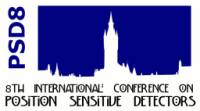Speaker
Mr
Nestor Ferrando
Description
Indirect position detectors based on scintillator crystals don't have a spacial uniformity in their response. This happens due to crystal irregularities and gain differences between the photomultiplier anodes. In order to solve this, PESIC, an integrated front-end for multianode photomultiplier based nuclear imaging devices was created. One of its main features is the digitally programmable gain adjustment for every photomultiplier output.
On another front, Cellular Automata have been proved to be a useful method to create models of certain dynamic systems. In this paper we introduce a Cellular Automaton which emulates the behavior of the scintillator crystal and the photomultiplier. Thanks to this model we can make an automatic energy-based calibration of the crystal and the photomultiplier by configuring the Cellular Automaton with experimental results and making it evolve up to an stables tate. This can be useful for make a pre-calibration of the detector before to make a calibration of the full system.

